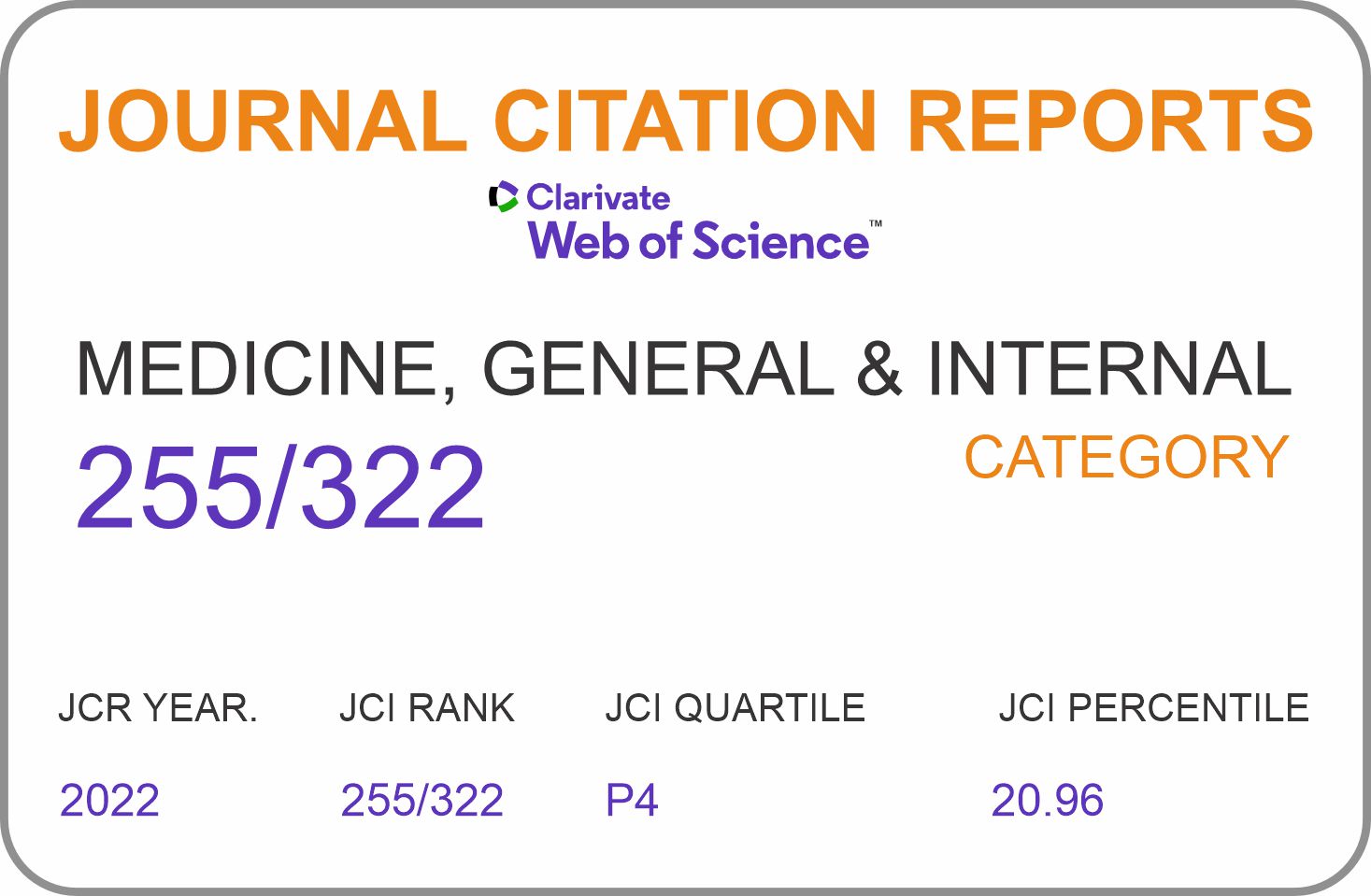Predictive models of intensive care unit admission in patients with covid-19: systematic review
DOI:
https://doi.org/10.35434/rcmhnaaa.2022.15Supl.%201.1402Keywords:
Forecasting, COVID-19, Intensive care unit, Prediction, Systematic reviewAbstract
Background: It is essential to identify the epidemiological and clinical characteristics of patients infected with COVID-19 associated with disease progression leading to ICU admission. The objective was to systematically review the models or scores for predicting admission to the intensive care unit (ICU) available to date for patients with COVID-19.
Methods: The study is a systematic review. PubMed, Scopus, Web of Science, Ovid-Medline, and Embase were searched until July 13, 2022. We included studies that have developed and validated a model or scoring system to predict ICU admission in patients with COVID-19. The primary outcome was ICU admission. Risk of bias assessment was performed using the PROBAST tool which is based on four domains: participants, predictors, outcome and analysis.
Results: Two studies were included for data extraction and critical appraisal. Predictive models of ICU admission and performance were obtained as primary outcomes. Common predictors for both models were associated with pulmonary compromise (respiratory rate or pulmonary ventilation) and systemic inflammation (C-reactive protein).
Conclusions: It is feasible to determine predictor variables for ICU admission in patients hospitalized for COVID-19. However, the studies do not determine a clearly defined score and present a high risk of bias, so it is not feasible to recommend the application of any of these models in clinical practice.
Downloads
Metrics
References
Wynants L, Van Calster B, Collins GS, Riley RD, Heinze G, Schuit E, et al. Prediction models for diagnosis and prognosis of covid-19: systematic review and critical appraisal. BMJ. 7 de abril de 2020;369:m1328. doi: 10.1136/bmj.m1328
Dofferhoff ASM, Swinkels A, Sprong T, Berk Y, Spanbroek M, Nabuurs-Franssen MH, et al. [Diagnostic algorithm for COVID-19 at the ER]. Ned Tijdschr Geneeskd. 14 de mayo de 2020;164:D5042. PMID: 32406638
Ihle-Hansen H, Berge T, Tveita A, Rønning EJ, Ernø PE, Andersen EL, et al. COVID-19: Symptoms, course of illness and use of clinical scoring systems for the first 42 patients admitted to a Norwegian local hospital. Tidsskr Den Nor Laegeforening Tidsskr Prakt Med Ny Raekke. 5 de mayo de 2020;140(7). doi: 10.4045/tidsskr.20.0301
Information on COVID-19 Treatment, Prevention and Research [Internet]. COVID-19 Treatment Guidelines. [citado 17 de marzo de 2022]. Disponible en: https://www.covid19treatmentguidelines.nih.gov/
Li K, Wu J, Wu F, Guo D, Chen L, Fang Z, et al. The Clinical and Chest CT Features Associated With Severe and Critical COVID-19 Pneumonia. Invest Radiol. junio de 2020;55(6):327-31. doi: 10.1097/rli.0000000000000672
Gilbert AW, Billany JCT, Adam R, Martin L, Tobin R, Bagdai S, et al. Rapid implementation of virtual clinics due to COVID-19: report and early evaluation of a quality improvement initiative. BMJ Open Qual. mayo de 2020;9(2):e000985. doi: 10.1136/bmjoq-2020-000985
Zhou F, Yu T, Du R, Fan G, Liu Y, Liu Z, et al. Clinical course and risk factors for mortality of adult inpatients with COVID-19 in Wuhan, China: a retrospective cohort study. Lancet Lond Engl. 28 de marzo de 2020;395(10229):1054-62. doi: 10.1016/s0140-6736(20)30566-3
Sun Y, Koh V, Marimuthu K, Ng OT, Young B, Vasoo S, et al. Epidemiological and Clinical Predictors of COVID-19. Clin Infect Dis Off Publ Infect Dis Soc Am. 28 de julio de 2020;71(15):786-92. doi: 10.1093/cid/ciaa322
Wolff RF, Moons KGM, Riley RD, Whiting PF, Westwood M, Collins GS, et al. PROBAST: A Tool to Assess the Risk of Bias and Applicability of Prediction Model Studies. Ann Intern Med. 1 de enero de 2019;170(1):51-8. doi: 10.7326/M18-1376
Gong J, Ou J, Qiu X, Jie Y, Chen Y, Yuan L, et al. A Tool for Early Prediction of Severe Coronavirus Disease 2019 (COVID-19): A Multicenter Study Using the Risk Nomogram in Wuhan and Guangdong, China. Clin Infect Dis Off Publ Infect Dis Soc Am. 28 de julio de 2020;71(15):833-40. doi: 10.1093/cid/ciaa443
Huang H, Cai S, Li Y, Li Y, Fan Y, Li L, et al. Prognostic Factors for COVID-19 Pneumonia Progression to Severe Symptoms Based on Earlier Clinical Features: A Retrospective Analysis. Front Med. 2020;7:557453. doi: 10.3389/fmed.2020.557453
Sperrin M, Grant SW, Peek N. Prediction models for diagnosis and prognosis in Covid-19. BMJ. 14 de abril de 2020;369:m1464. doi: 10.1136/bmj.m1464
Surme S, Buyukyazgan A, Bayramlar OF, et al. Predictors of Intensive Care Unit Admission or Mortality in Patients with Coronavirus Disease 2019 Pneumonia in Istanbul, Turkey. Jpn J Infect Dis. 2021;74(5):458-464. doi:10.7883/yoken.JJID.2020.1065
Covino M, Sandroni C, Santoro M, et al. Predicting intensive care unit admission and death for COVID-19 patients in the emergency department using early warning scores. Resuscitation. 2020;156:84-91. doi:10.1016/j.resuscitation.2020.08.124
Burian E, Jungmann F, Kaissis GA, et al. Intensive Care Risk Estimation in COVID-19 Pneumonia Based on Clinical and Imaging Parameters: Experiences from the Munich Cohort. J Clin Med. 2020;9(5):1514. Published 2020 May 18. doi:10.3390/jcm9051514
Cheng FY, Joshi H, Tandon P, et al. Using Machine Learning to Predict ICU Transfer in Hospitalized COVID-19 Patients. J Clin Med. 2020;9(6):1668. Published 2020 Jun 1. doi:10.3390/jcm9061668
Published
How to Cite
Issue
Section
Categories
License
Copyright (c) 2022 Alex Castañeda-Sabogal, Paola Rivera-Ramírez, Saúl Espinoza-Rivera, Darwin A. León-Figueroa, Emilly Moreno-Ramos, Joshuan J. Barboza

This work is licensed under a Creative Commons Attribution 4.0 International License.















